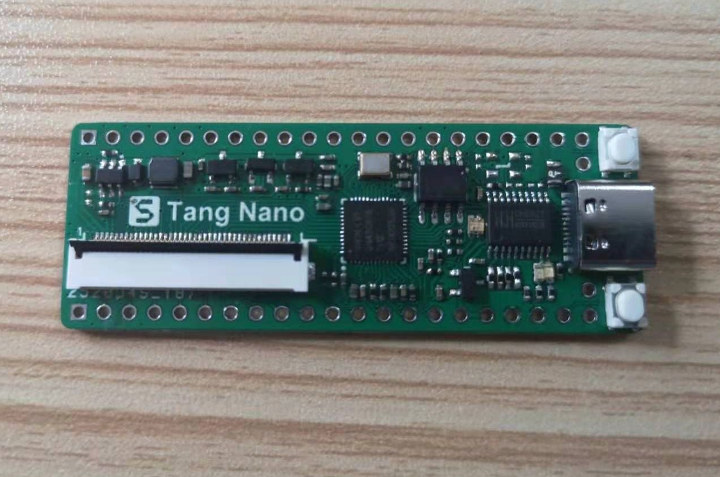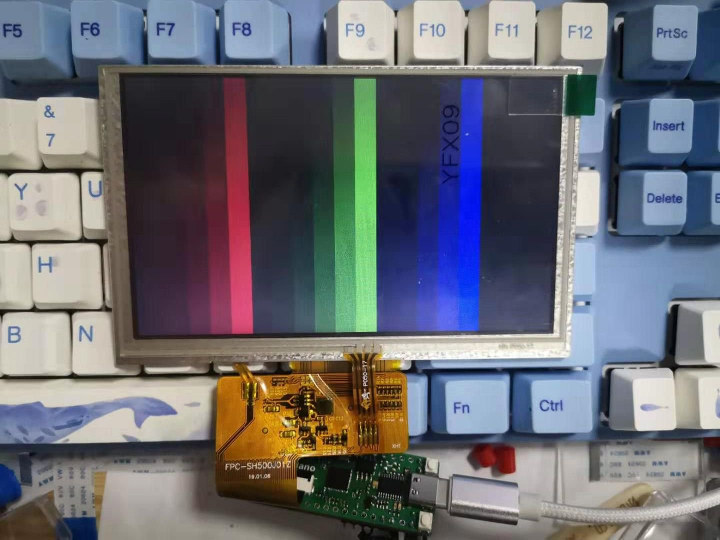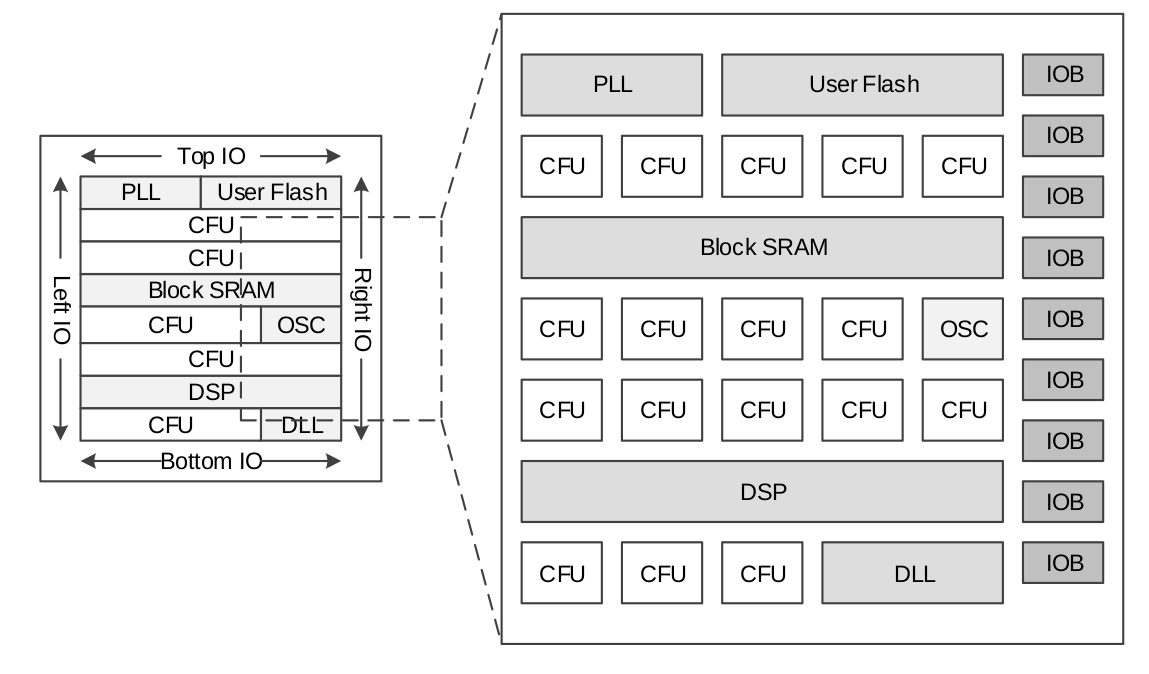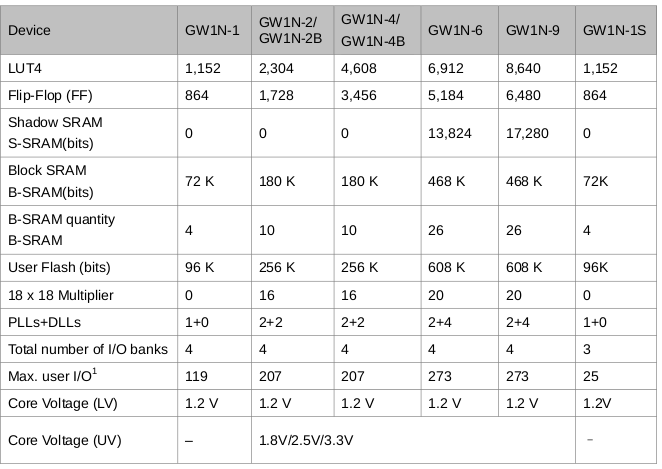Last year, we wrote about Lichee Tang FPGA board powered by Anlogic EG4S20 FPGA and targeting RISC-V development for just under $15.
The company, now called Sipeed, has made an even cheaper FPGA board with Tang Nano equipped with GOWIN Semi GW1N FPGA part of the company’s LittleBee family.
Sipeed Tang Nano

Sipeed Tang Nano specifications:
- FPGA – Gowin GW1N-1-LV FPGA with 1,152 LUT4, 864 Flip-Flops(FF), 72Kbit Block SRAM, 4x B-SRAM, 96Kbit user flash, 1x PLL, 4x I/O banks
- System Memory – 64Mbit (8MB) 3.3V PSRAM
- Display – Standard 40-pin RGB LCD interface with on-board screen backlight driver circuit (default normally open, EN pin can be connected to FPGA)
- USB – USB Type-C port for download and power supply
- Expansion – 34 I/O ports and power pins on headers (unpopulated), breadboard-compatible
- Misc – RGB LED, 2x user buttons, 24MHz crystal oscillator
- Power Supply – 5V via USB-C port (at least 400 mA)
- Dimensions – 58.4 x 21.3 x 4.8 mm

Everything is done through a USB-C cable with which the board is powered, and you can power download the bitstream. Programming can be done with GOWIN IDE available for Windows and Linux. There’s a Wiki with more information, but note that for now the English section is empty, and all info is on the Chinese version. Browsing that directory will bring you to more hardware documentation and the schematics, as well as (soon) more details about the software.
If you’d like to purchase the board, you can do so via Taobao, or a third-party Taobao forwarder if you are outside of china, where it is sold for 34.90 RMB ($4.9 US), or up to 132 RMB (~$18) with a 5″ color display.
GOWIN GW1N FPGA

The directory also contains the datasheet of GOWIN GW1N FPGA in both English and Chinese, where we can find the main features of the tiny, low-cost FPGA:
- User Flash
- GW1N-1, GW1N-1S – 100,000 write cycles, > 10-year data retention at +85 °C, selectable 8/16/32 bits data-in and data-out, 256 bytes page size: 256 bytes, 3 μA standby current, page write time: 8.2 ms
- GW1N-2/2B/4/4B/6/9) – Up to 608Kbits, 10,000 write cycles
- Low power consumption
- 55 nm embedded flash technology
- LV: supports 1.2 V core voltage
- UV: supports same power supply for VCC / VCCO / VCCx – Note: GW1N-1 and GW1N-1S devices do not support UV version, the other devices
support both. - Clock dynamically turns on and off
- Multiple I/O Standards
- LVCMOS33/25/18/15/12; LVTTL33, SSTL33/25/18 I,
SSTL33/25/18 II, SSTL15; HSTL18 I, HSTL18 II, HSTL15 I; PCI,
LVDS25, RSDS, LVDS25E, BLVDSE, MLVDSE, LVPECLE, RSDSE - Input hysteresis option
- Supports 4mA,8mA,16mA,24mA,etc. drive options
- Slew rate option
- Output drive strength option
- Individual bus keeper, weak pull-up, weak pull-down, and open
drain option - Hot socket
- I/Os in the top layer of GW1N-1S and GW1N-6/9 devices support MIPI input
- I/Os in the bottom layer of GW1N-6/9 devices support MIPI output
- I/Os in the Top layer and Bottom layer of GW1N-6/9 devices support I3C OpenDrain/PushPull conversion
- LVCMOS33/25/18/15/12; LVTTL33, SSTL33/25/18 I,
- High-performance DSP
- High-performance digital signal processing ability
- Supports 9 x 9,18 x 18,36 x 36 bits multiplier and 54 bits
accumulator; - Multipliers cascading
- Registers’ pipeline and bypass
- Adaptive filtering through signal feedback
- Supports barrel shifter
- Abundant slices
- Four input LUT (LUT4)
- Double-edge flip-flops
- Supports shift register and distributed register
- Block SRAM with multiple modes
- Supports dual port, single port, and semi-dual port
- Supports bytes write enable
- Flexible PLLs+DLLs – Frequency adjustment (multiply and division) and phase
adjustment; Supports global clock - Built-in flash programming – Instant-on; supports security bit operation; supports AUTO BOOT and DUAL BOOT
- Configuration
- JTAG configuration
- GW1N-2B and GW1N-4B devices support JTAG transparent
transmission - Offers up to six GowinCONFIG configuration modes: AUTOBOOT,
SSPI, MSPI, CPU, SERIAL, DUAL BOOT
As you can see in the table below, GW1N-1 used in Tang Nano board only supports some of the features and is one of the entry-level members of the family.
 You’ll find more by checking out the datasheet.
You’ll find more by checking out the datasheet.

Jean-Luc started CNX Software in 2010 as a part-time endeavor, before quitting his job as a software engineering manager, and starting to write daily news, and reviews full time later in 2011.
Support CNX Software! Donate via cryptocurrencies, become a Patron on Patreon, or purchase goods on Amazon or Aliexpress




